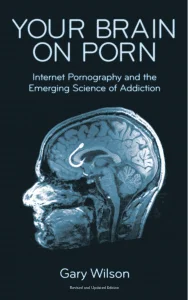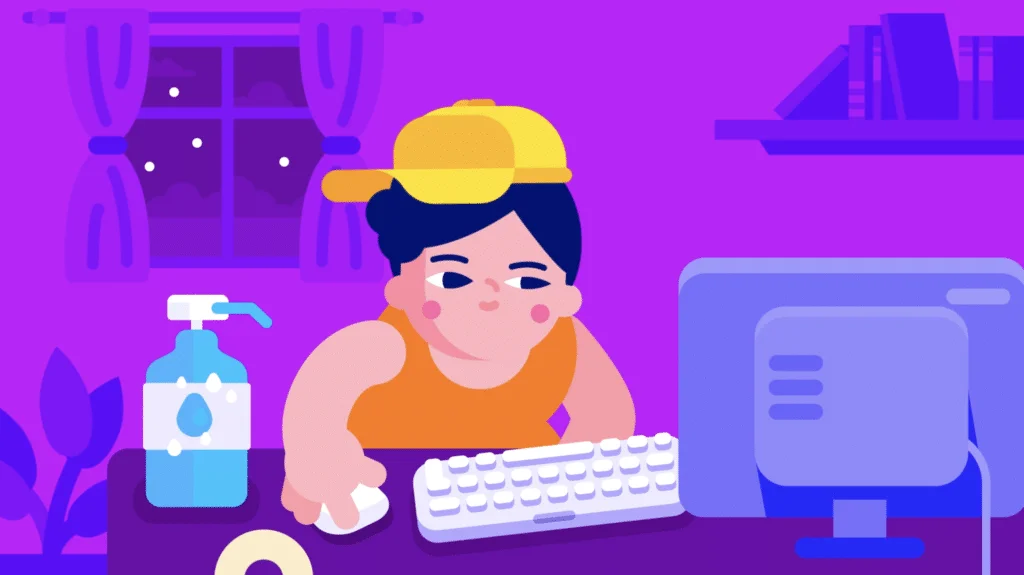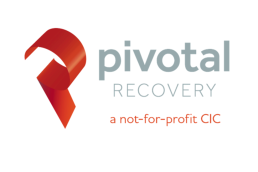So you have discovered your child is watching porn. “What should I do?”
First of all – don’t panic. Your child is not alone – the average age for first exposure to pornography is only 11. Though that is an average and means children much younger are accessing porn. Children are naturally curious and that is a good thing. Past generations may have looked up ‘dirty words’ in the dictionary. Or they had stolen a copy of “Playboy” to pass round in the playground. Now they are accessing much more explicit material online.
Children are accessing porn at an increasingly young age. They don’t have the ability to be critical of that information. Nor can they make sense of it. Nor are able to tell the difference between what’s real or what’s fake. What they are watching is not about fully consensual sex based on consideration for each other as in ‘real’ sexual relationships. If this is where they learn about sex they are unfortunately likely to carry this into their future sexual relationships. It will be based on the belief that what they are watching depicts what ‘real’ sex looks like. It will suggest the roles they should be taking – and enjoying, even if they are violent and non consensual. Most of the violence too is real, not fake, as it might be in a Hollywood film.
Surely there is some sort of age verification law to stop kids accessing it?
The UK’s Online Safety Act 2023, which will make pornography sites verify the age of people logging on to them, will not come into effect until 2025 at the earliest – and in the meantime children are left unprotected. It is also important to be aware that children do not just access pornography on pornographic sites such as Pornhub. Messaging sites such as WhatsApp, Kik, Telegram, MeWe and Wickr have end-to-end encryption. This means content is private. Even law agencies find it difficult to trace senders who are only identified by their username. Cloud storage apps such as MEGA and SpiderOak also offer privacy. It means users can upload images and pass them on to other users. These sites and apps have become a favourite way to distribute illegal, pornographic content including pictures of child sexual abuse. Any young person accessing and downloading one of these files would be committing the offence. This is based on having in their possession illegal material. It applies even though they were not aware of what was in the file.
What harm does ‘normal’ porn do?
A teenager’s brain is ‘wired’ to seek out new, exciting experiences. But the more rational part that says, ‘Let’s think about this’ is still developing. This is not just true of risk-taking behaviour, but all interactions. To survive, humans need to reproduce. Hence the push to seek out sexual relationships that comes with puberty without the considerations that come with maturity. With porn, the developing brain is flooded with images gained through hours of consuming pornography. Patterns can be set for the future. Brain development is not made through meeting other young people. Such as making relationships based on getting to know and like each other. Rather brain patterns are based on solitary masturbation in front of a screen. Even the briefest of internet searches for pornography will throw up scenes of violence and degradation. This can give very skewed impression as to what grown up relationships should be.
Body image distortions
We are also very aware of how important body image is for our youngsters. What they see on these sites can lead to negative comparisons. It can also give very wrong expectations to teenagers as to what their partner should look like. It even affects what they should be willing to do. Consistent use of porn can also lead to difficulty in forming ‘real’ relationships – both physically and emotionally. How can one partner offer the same variety and excitement that a click on a porn site can? And that constant seeking for new pleasures can take users down a dark path as ‘ordinary’ porn becomes unexciting. This is a very good short video about how porn distorts intimate relationships.
Not every person that watches porn will develop an addiction.
Most young porn users will sexually condition their brain to online porn and many develop erectile dysfunction or fetishes or a range of other unexpected changes. Those changes can reverse when they experiment with quitting porn. They may feel as if they are addicted because it is hard to stop using. But the criteria for compulsive sexual behaviour disorder or ‘porn addiction’ as many call it, is more complicated. Most of the people who do become addicted however will start watching it from an early age.
The most important message is: talk to your child about this regularly
Be natural and straightforward – easier said than done! Try not to show your own anxiety. This is because your child is less likely to say they have seen a sexual image. A good time to do this is when there is no eye contact. For example, try it when in a car or in response to something you are watching together. Never assume that your internet security will stop them accessing pornography. Be on the lookout for teachable moments. Talk about issues as they come up on TV, in films or online. This can help to give you the opportunity to start an age-appropriate conversation. That is conversations about their bodies and what healthy relationships look like. Give them positive messages. Talk to them about loving sexual relationships and how to care for themselves and their boyfriend, girlfriend or partner.
Talk to them about their experiences. A deep discussion on pornography isn’t recommended for younger children. Do start conversations at a very early age about relationships being about kindness and looking after each other. Make sure that they know they can come and talk to you. They need to know that you won’t overreact or be shocked by whatever they tell you. Take a no-blame approach Recognise that children are naturally curious about sex and like to explore. Talk about consent – especially with your sons. Don’t frighten them with talks of illegality. Take the opportunity when it arises – perhaps through a TV or news programme – to point out possible consequences. Pornographers are speaking to our children about what a healthy sexual relationship looks like before we are. So we have to make sure that we speak to them too. For more details, see our range of resources below.
Sexual Offending
Worst case scenario, if your child is caught sexually offending and you have a visit from the police, you need to know what to do. This is likely to be extremely stressful for the whole family. If will depend what age your child is. Remember a person is a child under the law until the age of 18. It also means the porn performers they have been watching are children if they are under 18, even if they look older. Though in many cases older performers are dressed to look much younger. Accordingly it is almost impossible to estimate a performer’s real age. For more details on what to do if your child is questioned by police in England or Wales, see the Youth Justice Legal Centre website. For free legal advice and support in Scotland, see the Scottish Child Law Centre website.
Table of Contents
- Overview of Porn Risks
- Top tips for talking to children
- What apps might help?
- Recommended Books
- Adolescent Brain
- Research from British Board of Film Classification
- Videos to Help Protect Young People
- Legal Issues
- Autism Spectrum Disorders
- Government Intervention
- More support from The Reward Foundation
If you think your teenager won’t take ‘your’ advice, you will get tips on how to take advantage of certain situations to sneak in useful information in a casual way or point them to useful resources. Help your child learn about pornography’s many side effects including mental and physical health problems, the social impact, effect on school work and its legal implications. The biggest fear for most young men is the loss of sexual potency, and porn-induced erectile dysfunction is a very real issue today. Making children aware of such possible effects, may help them pay attention.
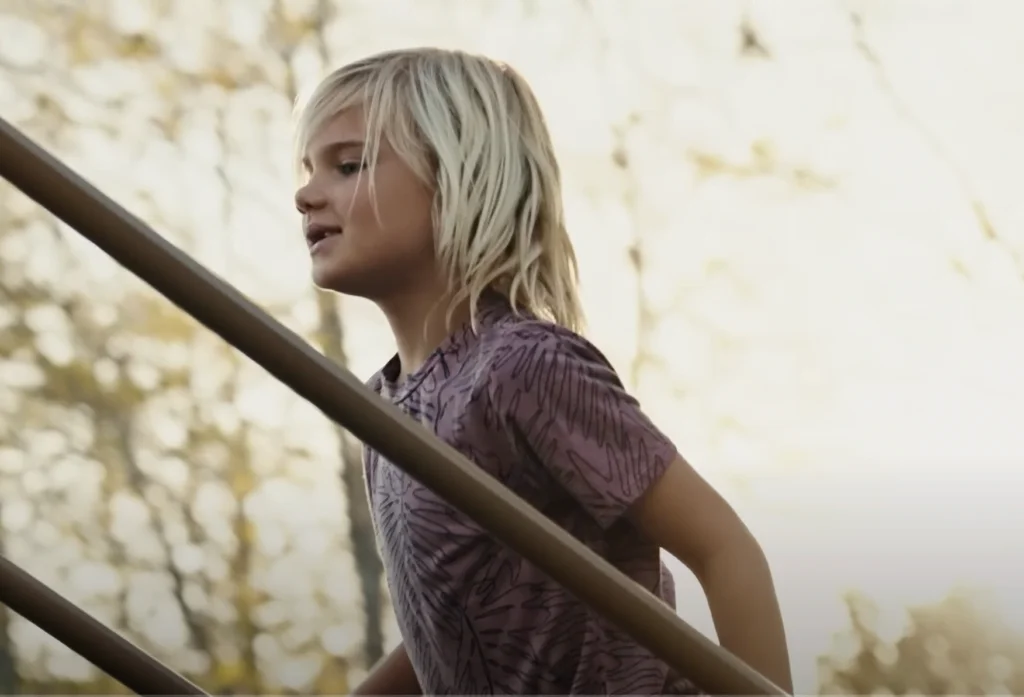
Overview of Porn Risks
If you think that it is better for your child to use internet pornography as a way of delaying sexual experimentation, think again. If your child becomes conditioned to arousal by pornography, it may mean he or she will not be able to enjoy sex with a real person when they are older. Here are a range of pornography’s many side effects:
Social Isolation; mood disorders; sexual objectification of other people; risky and dangerous behaviour; unhappy intimate partner; erectile dysfunction; self-loathing, neglecting important areas of life; compulsive use of porn, addiction. All of these are driven by sexual conditioning of the brain due to bingeing on thousands and thousands of hours of hardcore internet pornography over time.
Top tips for talking to children
- “Don’t blame and shame” a child for watching pornography. It is everywhere online, popping up in social media and in music videos. It can be hard to avoid. Other kids pass it on for a laugh or bravado, or your child may stumble across it. They may of course be actively seeking it out too. Just forbidding your child from watching it only makes it more tempting, for as the old saying goes, ‘forbidden fruit tastes sweetest’.
- Keep the lines of communication open so that you are their first port of call to discuss issues around porn. Children are naturally curious about sex from a young age. Online porn seems like a cool way to learn how to be good at sex. Be open and honest about your own feelings about pornography. Consider talking about your own exposure to porn as a young person, even if it feels uncomfortable.
- Kids don’t need one big talk about sex, they need many conversations over time as they go through the teen years. Each must be age appropriate, ask for help if you need it. Fathers and mothers both need to play a role in educating themselves and their kids about the impact of technology today.
- Dealing with protests: See below for 12 responses you can give to common comments. Kids may protest at first, but many children have told us they would like their parents to impose curfews on them and give them clear boundaries. You are not doing your child any favours by leaving them ‘literally’ to their own devices. See below for ways to deal with pushback.
- Listen to their needs and emotions. Be an ‘authoritative‘ rather than a command and control, ‘authoritarian’ parent. That means speak with knowledge. You’ll have to educate yourself. You will get more buy-in that way. Use this website to help you.
- Let your children cooperate in making the house rules with you. They are much more likely to stick with the rules if they have helped make them. That way they have skin in the game.
- Don’t feel guilty for taking assertive action with your children. Their mental health and wellbeing are very much in your hands. Arm yourself with knowledge and an open heart to help your child navigate this challenging period of development. Here is great advice from a child psychiatrist talking specifically about the parental guilt issue.
- Recent research suggests that filters alone will not protect your children from accessing online pornography. This parents’ guide emphasises the need to keep the lines of communication open as more important. Making porn harder to access however is always a good start especially with young children. It is worth putting filters on all internet devices and checking on a regular basis that they are working. Check with Childline or your internet provider about the latest advice on filters.
- Tips about how to prevent and reduce misogyny and harassment among young people at school and college.
- Delay giving your child a smartphone or tablet for as long as possible. Mobile phones mean you can stay in contact. While it may seems like a reward for hard work in primary or elementary school to present your child with a smartphone on entering secondary school, observe what it is doing to their academic attainment in the months that follow. Do children really need 24 hour-a-day access to the internet? While children might receive a lot of online homework assignments, can entertainment use be restricted to 60 minutes a day, even as an experiment? There are lots of apps to monitor internet usage especially for entertainment purposes. Children 2 years and under should not use screens at all.
- Turn off the internet at night. Or, at the very least, remove all phones, tablets and gaming devices from your child’s bedroom. Lack of restorative sleep is increasing stress, depression and anxiety in many children today. They need a full night’s sleep, eight hours at the very least, to help them integrate the day’s learning, help them grow, make sense of their emotions and feel well.
- Let your children know that porn is designed by multi-billion dollar tech companies to “hook” users without their awareness to form habits that keep them coming back for more. It’s all about keeping their attention. Companies sell and share intimate information about a user’s desires and habits to third parties and advertisers. It is made to be addictive like online gaming, gambling and social media to keep users coming back for more as soon as they are bored or anxious. Do you want questionable porno film directors teaching your children about sex?
Twelve responses to your child’s arguments about why it’s cool to use porn

Kids today are almost brainwashed into believing that watching porn is not only their ‘right’ as digital natives, but that there’s nothing harmful about it. Sadly, they are mistaken. Young people between the ages of 10 and 20-25, the period of adolescence, are the most vulnerable to sexual conditioning by pornography. The unusually potent stimulation of today’s porn can alter their sexual arousal template, the level of stimulation they need to become aroused, such that some find they need porn to become aroused. Over time, a real person, however attractive, may not turn them on. Many of the challenges seem to be around 14 years of age when for example, sexting, sending nude photos, is rife. Also increased of pornography at age 14 should a decline in academic achievement 6 months later according to a Belgian study.
Nor do children and young people under 18 have a right to watch porn as some pundits claim. Rather governments and parents have a duty to protect them from harmful products. Most governments have failed in that regard. Porn has not been proven to be a safe product. In fact, there is robust evidence of the reverse. That said, there’s no call to blame or shame a child for watching pornography. They will stumble across it or seek it out driven by natural curiosity about sex. The internet is their go-to source for information. The point is parents and caregivers need to protect their children from the potential harms.
How much is too much?
The question is how much is too much? That’s what they have to learn for themselves as every brain is unique. However as a guide, brain scan research showed that even moderate use, around 3 hours a week, caused significant brain changes and shrinking of grey matter in the decision making part of the brain. Bingeing, perhaps at weekends or during school holidays or lockdown, leads to material brain changes. Another study from Italy showed that 16% of high school seniors who consumed pornography more than once a week experienced abnormally low sexual desire. Compared to 0% of non-porn users reporting low sexual desire.
Arguments to use when challenged
If they try to push back at you with smart answers about why it is good for them, and that you are just a tech “dinosaur”, remember you have the real-life experience they don’t yet have. You might want to consider the following arguments when challenged. These are responses to twelve common statements kids make when the topic of their porn use arises. You know your own child best and what will work for them. Be creative about how and when to make those conversations happen. Good luck!
“It’s free!”
Is it a good idea to take free sweets from strangers? Pornography is the modern-day, electronic equivalent. It is the consumer product of a multibillion-dollar industry. What is the porn company getting in return for enticing you with free, artificial sexual stimulation? Mainly advertising revenue from selling your private data to hundreds of other companies. If a product is free, your personal information is the product. Watching internet porn can also lead to being groomed online, as well as risking a range of mental and physical health, and relationship problems over time.
“Everyone is watching it.”
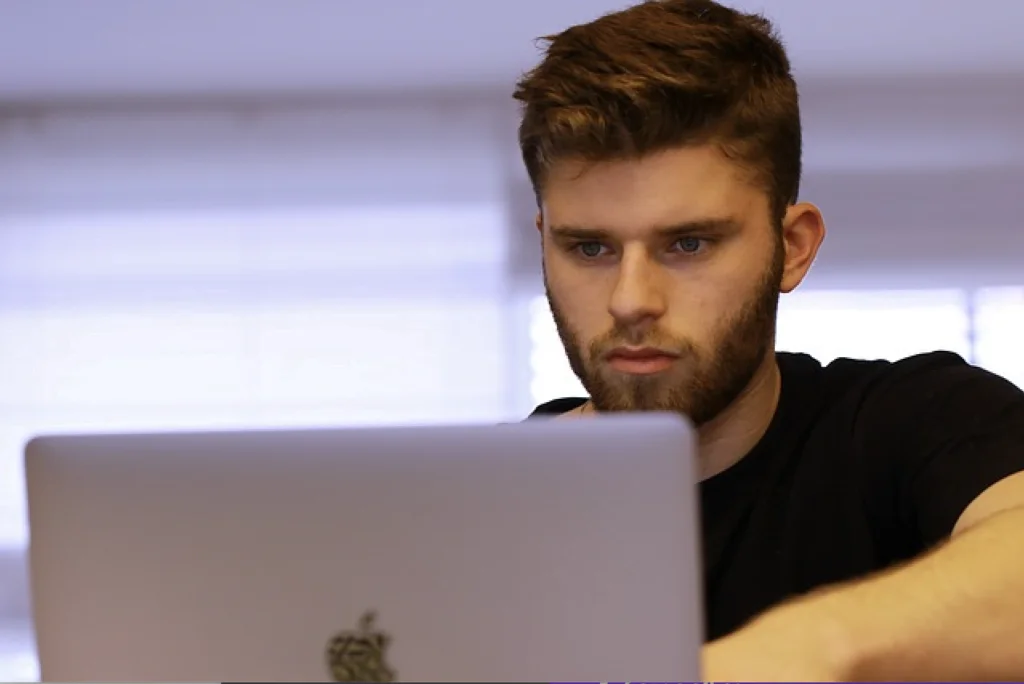
I know you want to fit in. Fear of missing out (FOMO) is a big issue for most kids. It is part of normal adolescent development to start to move away from the family and be influenced by your friends. Yet as a parent, I want the best for you at this time and your friends might not know the consequences of entertainment choices. An Italian study found: 16% of high school seniors who consumed pornography more than once a week experienced abnormally low sexual desire. That compared to 0% of non-porn users reporting low sexual desire. Just know, not everyone is watching porn, just as not everyone is having sex, despite the boasting. You have to learn to evaluate what creates risks for you even when you can’t see the effects till later.
“It teaches me how to be a man.”
Boys especially think porn use is a mark of developing masculinity, a rite of passage into adulthood. But porn can cause a negative body image with worries about penis size and even lead to eating disorders in young men. (See the recommended books elsewhere in this parents’ guide for tips on how to promote positive masculinity.)
I can’t stop you seeing porn because it is everywhere on the internet, and you will see it whether by accident or by seeking it out. Your pals will send it to you for a laugh. But everyone’s brain is unique and will be affected differently. It is the endless novelty and ease of escalation to more extreme material and how long you use it for that seem to matter most. Try some of the quizzes here to see if it is affecting you. Let’s keep the lines of communications open. It’s an important life skill to be able to recognise things that may not be in your best interests and master urges to engage in them.
“It teaches me how to be an empowered woman.”

Pornography has always been primarily about the objectification of actors for another person’s arousal. It doesn’t teach users about loving another person, about safety or intimacy. In fact, it encourages unsafe practices such as sexual strangulation and condom-less sex that is contributing to a huge rise in sexually transmitted infections.
There is quite a lot of pornography in social media, on TV and in music videos. Along with porn videos themselves, all indirectly suggest ways of behaving in sexual encounters. Be selective about what messages you absorb. The effects of widespread porn use are already changing sexual tastes. A survey in 2019 by The Sunday Times, showed that twice as many young women under 22 (Gen Z) as young men said they preferred BDSM and rough sex types of porn.
The police report a concerning increase in cases of sexual strangulation. I want you to be safe as you explore relationships and to find someone you can trust who won’t cause you physical or mental harm. Have a read at this blog to learn about how women can be brain damaged in as little as 4 seconds by sexual strangulation and with as little pressure on the neck as it takes to open a can of juice. The porn industry may serve strangulation up as “air play”, or “breath play”, but sexual choking and strangulation are dangerous practices; they are not games. If you pass out, you can’t consent to what is going on (or, more importantly, withdraw your consent). You might end up dead. I don’t want to lose you.
“It’s the best way to learn about sex.”

Really? Porn is industrial strength, two-dimensional sexual stimulation based mainly on videos of real actors, usually strangers to each other, having sex. It can come in cartoon form too, such as Japanese manga. Pornography teaches you to become a voyeur, someone who is aroused by watching others have sex. It is much better to learn together with a real partner. Take your time. Gradual steps allow you to learn what works best for both of you.
Both men and women, when asked whom they would prefer between two lovers both equally attractive one of whom uses porn and the other doesn’t, favoured the lover who doesn’t use porn. Apparently, people don’t relish having their sexual performance compared with porn’s sexual athletes. They most likely also recognize that you can have a more genuine connection without porn scenarios running in either partner’s head. Do you want your lover thinking about someone else in their head when they are with you, especially a surgically- or pharmaceutically-enhanced porn performer? If a lover can’t focus fully on you, consider changing lovers unless they are willing to give up porn. If they are, send them here.
Porn teaches nothing about intimacy, developing a two-way relationship or consent. Consent is taken for granted in porn and never occurs as it would be in real life. Do you know how to say “no” to someone you fancy who wants you to do stuff you don’t want to do or are not sure about? It’s really important to learn. This is a key life skill. This is all the more important when you combine porn-influenced sex with alcohol or drugs. It can lead to sexual assault, rape and other violent outcomes.
Porn rarely shows condoms. But as you know, they act as a barrier to infection and also as a contraception. If you tell a person you are wearing one then pull it off without them knowing, in other words ‘stealthing’, that is illegal. It’s rape. You can’t withdraw consent on your side only. You could be charged by the police. Charges could ruin your job prospects in the future. Think carefully about how you behave. Ask yourself how you would want others to act towards you in the same situation.
“It feels so good – it’s intensely stimulating“
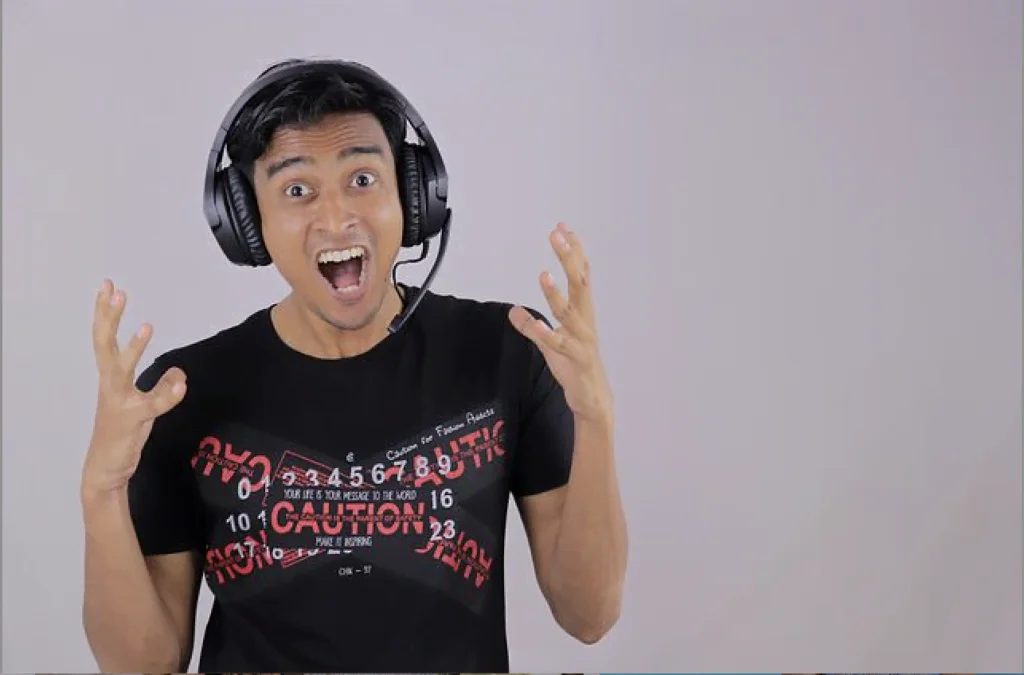
You’re right. For most of us orgasm offers the biggest blast of pleasure neurochemicals in the brain from a natural reward. Artificial rewards like drugs and alcohol can produce as much and more. But it is possible to get ‘too much’ pleasure of any kind. Too much stimulation can desensitise the brain leaving you craving for more. Everyday pleasures can seem boring by comparison. Programming or conditioning the brain to want and eventually need pleasure from a supernormal stimulus like hardcore internet porn can result in less satisfaction from real sex with a partner and even less desire for real sex itself. It can also lead to sexual dysfunctions such as erection problems or trouble climaxing with a partner. That is no fun for anyone. Watch this popular video to learn more.
“If I’m too young to have sex, this is a good substitute.”
Not in the long term if it leads to brain changes that stop you wanting sex with a real person or from experiencing pleasure with them when you eventually do. Today’s porn is not a harmless substitute for sex at any age. Maybe erotic magazines and films operated that way to a degree in the past, but streaming hardcore pornography today is different. It can overwhelm and mould your brain while it is still maturing.
Most mental health problems start developing at around age 14. Today, your brain is being shaped by extremely powerful media that others are manipulating for their profit. Potential harm to consumers is not adequately taken into account.
It’s all right to learn how to connect with other people in real life and focus on school work rather than trying to become a sexual athlete before your time. People who quit porn often report that their mental health improves along with their ability to attract potential partners.
“Porn lets me explore my sexuality.”

Perhaps. But pornography also ‘shapes’ some users’ sexual tastes. The more you explore internet pornography, the greater the risk of escalating to more extreme or weird porn genres as your brain desensitises, i.e. become bored with earlier levels of stimulation. Being sexually aroused by new material does not necessarily mean it determines ‘who you are’ sexually. Many people who have quit report that they had developed bizarre fetishes and tastes. These often disappear over time after they stop using it. The brain can change.
Incidentally, porn-free masturbation is a normal aspect of adolescent development. It’s today’s ever-novel porn with its potential for escalation that creates the most serious risks. Porn sites use algorithms to suggest material they hope you will click on going forward.
“Ethical porn is OK.”

What actually is it? So-called “ethical porn” is just another category of pornography. It is still part of an industry, whose business model is all about making money. It boasts better pay and conditions for the porn actors but does not reveal the potential harm to users. Ethical porn features most of the same themes, many of which are aggressive. Also, ethical porn often costs money. How many teenagers are likely to pay for their porn? In any case, even users who begin with ethical porn may find they crave increasingly edgy material as they become desensitised over time and seek out more regular, less “ethical” genres. Compared to regular porn, there are very few ethical types of porn available.
“It helps me get on with my homework.”
Not so. Research showed that “an increased use of Internet pornography decreased boys’ academic performance 6 months later.” People underestimate how much porn they are using online just as they do with gaming, social media, gambling or shopping. The risk is that these products are ‘specifically designed’ to keep a user clicking. In fact, the World Health Organisation formally recognizes addictive behaviours and compulsive porn use as disorders, that is, as public health concerns. Learning to exercise self-control will serve you better. Find a healthier treat or opt for porn-free self-pleasuring.
“It soothes my anxiety and depression.”
Online porn use may relieve tension in the short term, but over time it’s associated with increased mental health disorders in many users. Children and young people are the most vulnerable to mental health disorders because of their stage of brain development. Teens need to be especially careful of what they consume, as their brains are strengthening nerve connections related to the activities they engage in. What they consume now can channel their future arousal.
“It helps me sleep.”

Despite any short-term advantages, using your smartphone in bed makes it harder to sleep soundly even if you have a special screen to reduce the blue light effect. Lack of sound sleep contributes to poor mental health and can interfere with your ability to learn at school and pass exams. It can also impede physical growth and brain development, as well as the ability to recover from illness. Over time it can lead to depression.
Using porn consumption as a sleep-aid can backfire over time if you become dependent upon it. What else might help you fall asleep? Meditation? Stretching? Learning to draw your sexual energy up your spine and spread it throughout your body?
Can you leave your phone outside your bedroom at night? I want the best for you. Can we work on this together?
What Apps might help?
- A new app called Remojo is a terrific app that your child could use to help them if they accessing pornography more often than desired. It is not expensive and has been very successful so far. The website also has useful articles about how pornography affects users.
- There are many software and support options. Gallery Guardian notifies parents when a suspicious image appears on their child’s device. It deals with the risks around sexting.
- Moment is a free app that allows a person to monitor their use online, set limit and receive nudges when reaching those limits. Users have a tendency to underestimate their usage by a significant margin. This app is similar but not free. It helps people reboot their brain with help along the way. It’s called Brainbuddy.
- Here are some other programmes that may be useful: Covenant Eyes; Bark; NetNanny; Mobicip; Qustodio Parental Control; WebWatcher; Norton Family Premiere; OpenDNS Home VIP; PureSight Multi. The appearance of programmes in this list does not constitute an endorsement by The Reward Foundation. We do not receive financial benefit from sales of these apps.
Recommended Books
Your Brain on Porn
The best book on the market is by our late honorary research officer Gary Wilson. We would say that, but it happens to be true. It is called “Your Brain on Porn: Internet Pornography and the Emerging Science of Addiction”. It is a great parents’ guide too. Give it to your children to read as it has hundreds of stories by other young people and their struggles with porn. Many started watching internet porn at a young age, some as young as 5 or 6, often having stumbled across it accidentally.
Gary is an excellent science teacher who explains the brain’s reward, or motivation, system in a very accessible way for non-scientists. The book is an update on his popular TEDx talk from 2012 that has had over 14 million views.
The book is available in paperback, on Kindle or as an audiobook. In fact the audio version is available for FREE in the UK here, and for people in the USA, here, subject to certain conditions. It was updated in October 2018 to take account of the World Health Organization’s recognition of a new diagnostic category of “Compulsive Sexual Behaviour Disorder“. Translations are available in Dutch, Russian, Arabic, Japanese, German and Hungarian so far, with others in the pipeline.
Protecting Your Children from Internet Pornography
Dr John Foubert, an expert researcher on pornography’s harms, has released a new book that aims to give parents and caregivers guidance on how to protect their children from internet pornography. You can buy it from here.

The Boy Crisis
This is the new kid on the block and is an excellent book. It focuses on positive masculinity, encourages both parents to be involved as far as possible, to give boys boundaries, with no blaming or shaming. In their concise section on pornography the authors refer to yourbrainonporn.com five times so you know they have done their research well and are a trusted source of information. The Boy Crisis provides practical support and advice for the modern parent.
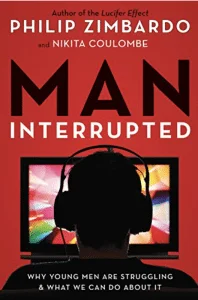
Man, Interrupted
Renowned social psychologist Professor Philip Zimbardo and Nikita Coulombe have produced an excellent book called Man Interrupted about why young men are struggling today and what we can do about it. It expands and updates Zimbardo’s popular TED talk “The Demise of Guys”. Based on robust research, it sets out why men are flaming out academically and failing socially and sexually with women. It is a valuable parents’ guide as it deals with the importance of male role models and what young men need when their father isn’t around to help them reach those male developmental markers in a healthy way.
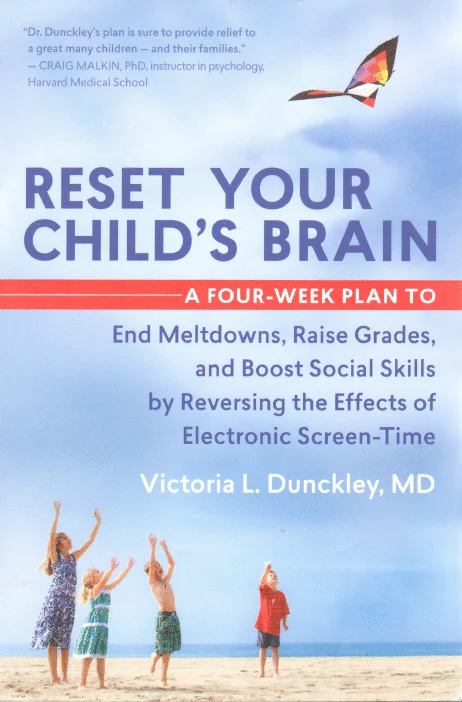
Reset Your Child’s Brain
Child psychiatrist Dr Victoria Dunckley’s book “Reset your Child’s Brain” and her free blog explain the effects of too much screen time on the child’s brain. Importantly it sets out a plan for what parents can do to help their child get on track again. It’s a great parents’ guide with step-by-step instructions.
Dr Dunckley doesn’t isolate porn use but focuses on internet use in general. She says that about 80% of the children she sees do not have the mental health disorders they have been diagnosed with and medicated for, such as ADHD, bipolar disorder, depression, anxiety etc. but rather have what she calls ‘electronic screen syndrome.’ This syndrome mimics the symptoms of many of these common mental health disorders. The mental health issues can often be cured/reduced by removing the electronic gadgets for a period of around 3 weeks in most cases, some children need longer before they can resume use but at a more limited level.
Her book also explains how parents can do this in a step-by-step parents’ guide in collaboration with the child’s school to ensure best cooperation on two fronts.
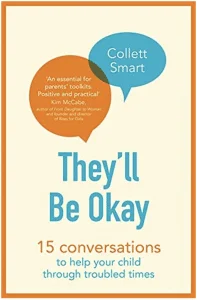
They’ll be Okay
This is a useful book by Colette Smart, a mother, former teacher and psychologist called “They’ll Be Okay“. The book has 15 examples of conversations you can have with your kids. The website also has some useful TV interviewees with the author sharing some key ideas too.
Autism Spectrum Disorder in the Criminal Justice System
The latest book on autism and offending, a very rare commodity, is by Dr Clare Allely. It is called Autism Spectrum Disorder in the Criminal Justice System published in 2022. It is an excellent book and fills a gap in the market on offending and autism. There is a section on online sexual offending specifically. The book explains what autism is, that it is a neuro-developmental condition, not a mental health disorder. It is very useful for everyone involved in the criminal justice system and for any parent who has a child or suspects their child of being autistic.
Books For Younger Children
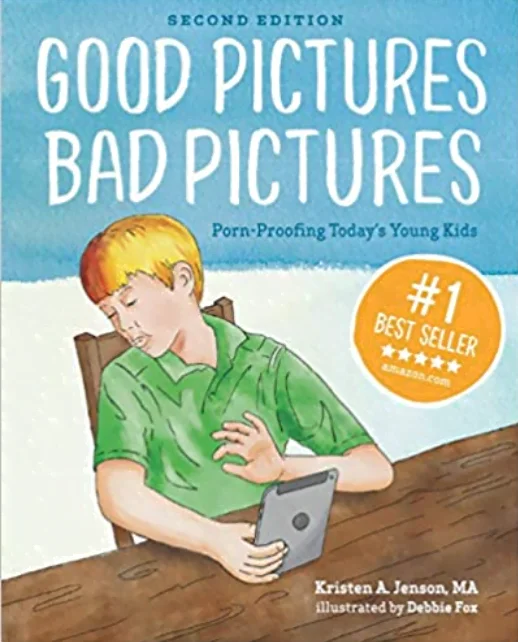
“Good Pictures, Bad Pictures” by Kristen Jenson is a good book focusing on the child brain. Ages 7-12
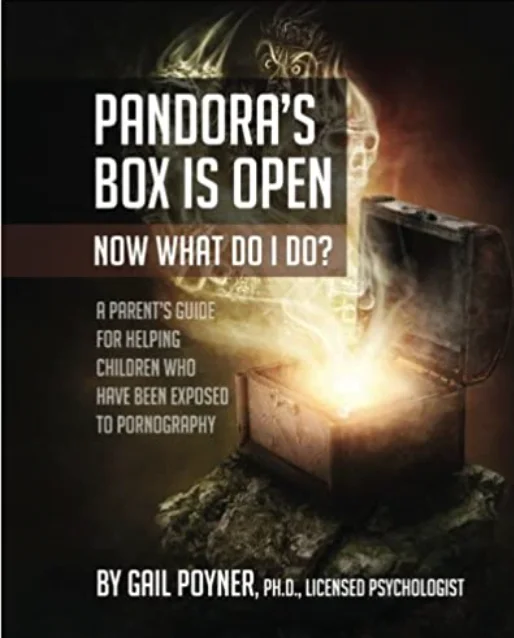
“Pandora’s box is open. Now what do I do?” Gail Poyner is a psychologist and provides useful brain information and easy exercises to help children think through options.
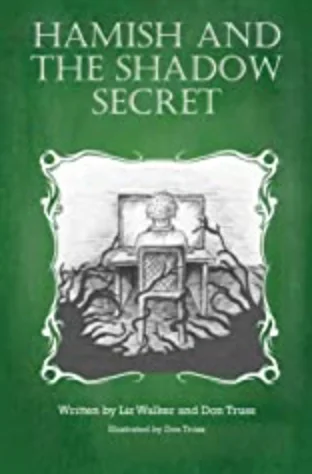
Hamish and the Shadow Secret. This is a thriller book by Liz Walker for children aged 8-12 years.
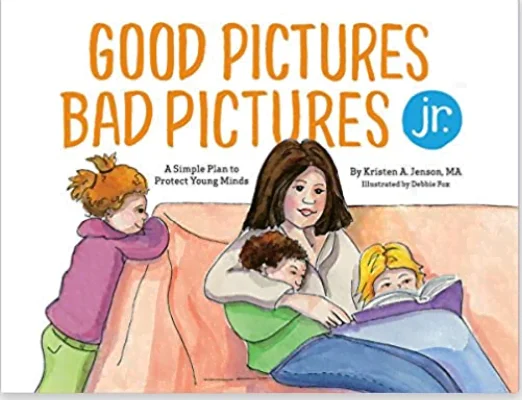
Good Pictures, Bad Pictures Jr. by Kristen Jenson for ages 3-6.
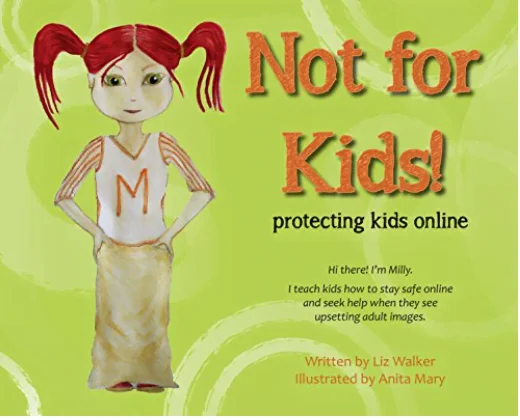
Not for Kids. Protecting Kids. Liz Walker has written a simple book for very young children with colourful graphics.
Useful Websites
- Learn about the health, legal, educational and relationship impacts of pornography use on The Reward Foundation website along with advice on quitting.
- See how the Culture Reframed Parents Program helps parents to talk to their kids about porn. Former sociology professor Dr Gail Dines, and her team have developed a free toolkit which will help parents raise porn-resilient kids. How to have the conversation: see the Culture Reframed Parents Program.
- The Remojo website has lots of tips and ideas about pornography’s effects. Understanding how challenging it can be to exercise self control. Amusing video by top psychologist.
- User-friendly harmful sexual behaviour prevention toolkit from the Lucy Faithfull Foundation.
- Excellent free advice from anti-child abuse charity Stop It Now! Parents Protect
- Fight the New Drug’s How to talk to your kids about porn.
- Here is an important new report from Internet Matters on internet safety and digital piracy with tips on how to keep your child safe while surfing the net.
- Advice from the NSPCC about online porn. Children as young as six are accessing hardcore pornography. Here is a report updated in 2017 called “I didn’t know it was normal to watch… a qualitative and quantitative examination of the impact of online pornography on the values, attitudes, beliefs, and behaviours of children and young people.”
- For legal advice for children in England and Wales, the Youth Justice and Law Centre is an excellent resource. It has excellent guides and toolkits about what happens if a child is involved in sexual offending.
-
New video from FT Films: Capture, who’s looking after the kids? Parents and carers are the first line of protection for their kids.
Videos to help protect young people
This 2 minute, bright animation provides a quick overview and supports the urgent need for implementation of age verification legislation to protect children. You can show it to your children too as it does not contain pornography.
This 5-minute video is an excerpt from a documentary from New Zealand. In it a neurosurgeon explains what porn addiction looks like in the brain and shows how similar it is to cocaine addiction.
In this TEDx talk “Sex, Porn and Manhood“, Professor Warren Binford, speaking as both a mother and concerned teacher, gives a very good overview of how porn affects children. This TEDx talk by Professor Gail Dines “Growing up in a pornified culture” (13 mins) explains in clear terms how music videos, porn sites and social media are shaping our children’s sexuality today.
Here’s a funny TEDx talk (16 mins) called “How Porn Skews Sexual Expectations” by an American mother and sex educator Cindy Pierce. Her parents’ guide says why ongoing chats with your kids about porn are so necessary and what gets their interest. See below for more resources about how to have those conversations.
Self control for adolescents is a challenge. This is excellent TEDx talk by American behavioural economist Dan Ariely called The Heat of the Moment: The Effect of Sexual Arousal on Sexual Decision Making.
See popular new video “Raised on Porn“. It’s 36 minutes long.
The Fantastic, Plastic Adolescent Brain

Adolescence starts around age 10-12 and lasts until the mid twenties. During this critical period of brain development, children experience a period of accelerated learning. Whatever they focus their attention on most will become strong pathways by the time this period of development slows down. But from around puberty onwards, children start to become particularly curious about sex and want to learn as much as possible about it. Why? Because nature’s number one priority is sexual reproduction, passing on genes. And we are programmed to focus on it, ready or not, and even if we don’t want to. The internet is the first place children start to look for answers about how to do it. What they find is limitless amounts of hardcore pornography and sadly for increasing numbers, many unexpected side effects.
Access to free, streaming, hardcore pornography is one of the biggest, unregulated social experiments ever unleashed in history. It adds a whole new range of risky behaviours to an already risk-seeking brain. See this short video to understand more about the fantastic plastic adolescent brain by a neuroscientist and child psychiatrist. Here is more on the adolescent brain with advice for parents from a neuroscientist.
Boys tend to use porn sites more than girls, and girls prefer social media sites and are more interested in erotic stories, such as 50 Shades of Grey. This is a separate risk for girls. For example, we heard about a 9 year old girl who downloaded and was reading narrative porn on her Kindle. This was despite her mother installing restrictions and controls on all other devices she has access to, but not on Kindle.
Many teens say they wish their parents would be more proactive in discussing pornography with them. If they can’t ask you for help, where will they go?
What teens are watching
The most popular website Pornhub promotes anxiety-producing videos such as incest porn, strangulation, torture, rape and gangbangs. Incest is one of the fastest growing genre according to Pornhub‘s own reports. Most of it is free and easy to access. In 2019 alone, they uploaded 169 years’ worth of porn in 6 million separate videos. There are 7 million sessions a day in the UK. 20-30% of users are children despite hardcore pornography being made as adult entertainment. Children’s brains cannot cope with such industrial strength sexual material without harm caused to their health and relationships. Pornhub sees the pandemic as a great chance to hook more users and are offering free access to their premium (usually paid) sites in all countries.
Research from British Board of Film Classification
According to this research from 2019, children as young as 7 and 8 are stumbling across hard core pornography. There were 2,344 parents and young people participating in this research.
- Majority of young people’s first time watching pornography was accidental, with over 60% of children 11-13 who had seen pornography saying their viewing of pornography is unintentional.
- Children described feeling “grossed out” and “confused”, particularly those who had seen pornography when they were under the age of 10.
- More than half (51%) of 11 to 13 year olds reported that they had seen pornography at some point, rising to 66% of 14-15 year olds.
- 83% of parents agreed that age-verification controls should be in place for online pornography
The report also demonstrated a discrepancy between parents’ views and what children were actually experiencing. Three quarters (75%) of parents felt that their child would not have seen pornography online. But of their children, more than half (53%) said they had in fact seen it.
David Austin, Chief Executive of the BBFC, said: “Pornography is currently one click away for children of all ages in the UK, and this research supports the growing body of evidence that it is affecting the way young people understand healthy relationships, sex, body image and consent. The research also shows that when young children — in some cases as young as seven or eight years old — first see pornography online, it is most commonly not on purpose.”
Documentary by Parents for Parents about Porn’s Effects on Kids
We do not receive any money for this recommendation but this is a great video as a parents’ guide. You can watch the free trailer on Vimeo. It is a documentary made by parents, who happen to be filmmakers, for parents. It is the best overview of the issue we have seen and has great examples of how to have those tricky conversations with your kids. Viewing the underlying video costs only £4.99.
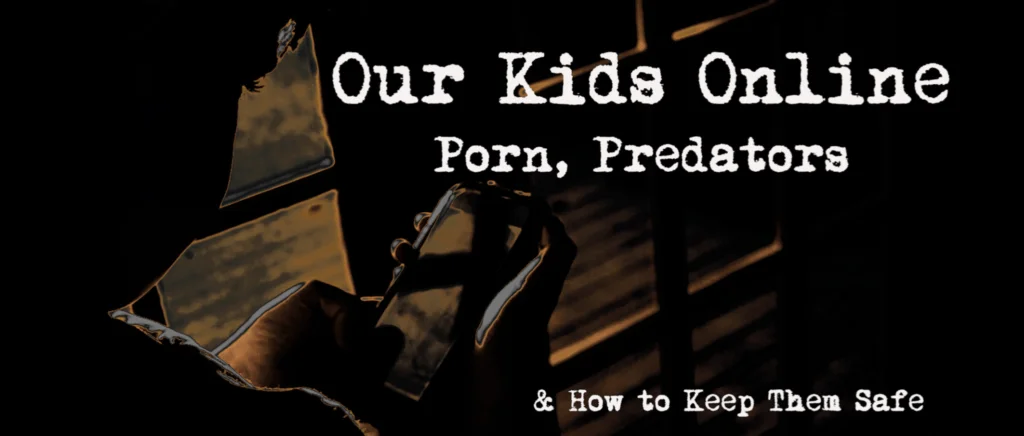
Recovery websites for young users
Most of the main free recovery websites such as yourbrainonporn.com; RebootNation.org; PornHelp; NoFap.com; Go for Greatness, Addicted to Internet Porn and Remojo.com are secular but have religious users too. Useful as a parents’ guide to get an idea of what those in recovery have experienced and are now coping with as they adjust.
Faith-based resources
There are good resources available too for faith- based communities such as Integrity Restored for Catholics, for Christians generally Naked Truth Project (UK) How Porn Harms (US), and MuslimMatters for those of the Islamic faith. Please contact us if there are any other faith-based projects we can signpost.
Legal issues
Any parents’ guide needs to include the legal issues both children and parents can face due to abusive pornography use. Regular use of internet pornography by children shapes the child’s brain, their sexual arousal template. It has a big influence on sexting and cyberbullying. A concern for parents should be the potential legal implications of their child developing problematic pornography use resulting in harmful sexual behaviour towards others. This page from the Expert Group appointed by the Scottish Government into harmful sexual behaviour among children gives examples of such behaviours. See here too for Sexting in Scotland. Sexting in England, Wales and Northern Ireland. The law is different in some respects in the different legal jurisdictions. For instance accessing Japanese cartoon pornography (Manga) is illegal in England and Wales but not in Scotland.
Lucy Faithfull Foundation’s Toolkit
See anti-child abuse charity Lucy Faithfull Foundation’s new harmful sexual behaviour prevention toolkit aimed at parents, carers, family members and professionals. The Reward Foundation is mentioned as a source of help.
In the UK, the police are required by law to note any sexting incidents in the Police Criminal History system. If your child is caught with indecent images and has been coercive in obtaining them or passing them on to others, he or she could be charged by the police. Because sexual offences are considered very seriously by the police, that sexting offence, recorded in the police criminal history system, will be passed on to a prospective employer when an enhanced check is requested for work with vulnerable people. This includes voluntary work.
Sexting may seem like a harmless form of flirting, but if it is aggressive or coercive and many are, the impact could have serious, longer term implications for your child’s career prospects. Regular pornography models coercive behaviour that young people believe is cool to copy.
Kent police have talked about charging parents as holders of the phone contract for any illegal sexting by their child.
Autism Spectrum Disorders
If you have a child who has been assessed as being on the autism spectrum, you need to be aware that your child may be at a higher risk of becoming hooked on pornography than neurotypical children. If you suspect your child might be on the spectrum, it would be a good idea to have them assessed if possible. Young men with ASD in particular with high functioning Asperger’s Syndrome are particularly vulnerable. Autism affects at least 1-2% people of the population at large, true prevalence is unknown, yet more than 30% of child on child sex abuse offenders are on the spectrum or have learning difficulties. Here is a recent paper about one young man’s experience. Contact us for access to the paper if required.
Autism spectrum disorder is a neurological condition present from birth. It is not a mental health disorder. While it is a much more common condition among males, 5:1, females can have it too. A recent article about autism and screen time is a warning for parents. For more information read these blogs on porn and autism; a mother’s story; and autism: real or fake?, or see our presentation on it in our YouTube channel. See this excellent new book on Autism Spectrum Disorder in the Criminal Justice System. It’s a must for parents and teachers where they suspect a child might be autistic or has been assessed as such.
Government Intervention
This is too big an issue for parents to deal with alone even with a school’s help. The UK Government has a duty to protect the most vulnerable in society. The government promised new regulations that would include social media sites as well as commercial pornography websites under the new Online Safety Act 2023. Here is a blog by the Carnegie Trust that sets out what the new act will do. In the meantime, parents and carers have to do what they can, in cooperation with schools, to help guide their children to safe use of the internet. This parents’ guide to internet pornography is an overview of some of the best materials available to help you in the meantime. Encourage your child’s school to use our free lesson plans on sexting and internet pornography as well.
We want children to grow up to have happy, loving, safe intimate relationships. Watch this charming video, “what is love?” to remind us of what it looks like in practice.
More support from The Reward Foundation
Please contact us if there is any area you’d like us to cover on this subject. We will be developing more material on our website over the coming months. Sign up to our e-newsletter Rewarding News (at foot of page) and follow us on Twitter (@brain_love_sex) for the latest developments.
We last updated on 6 December 2023


